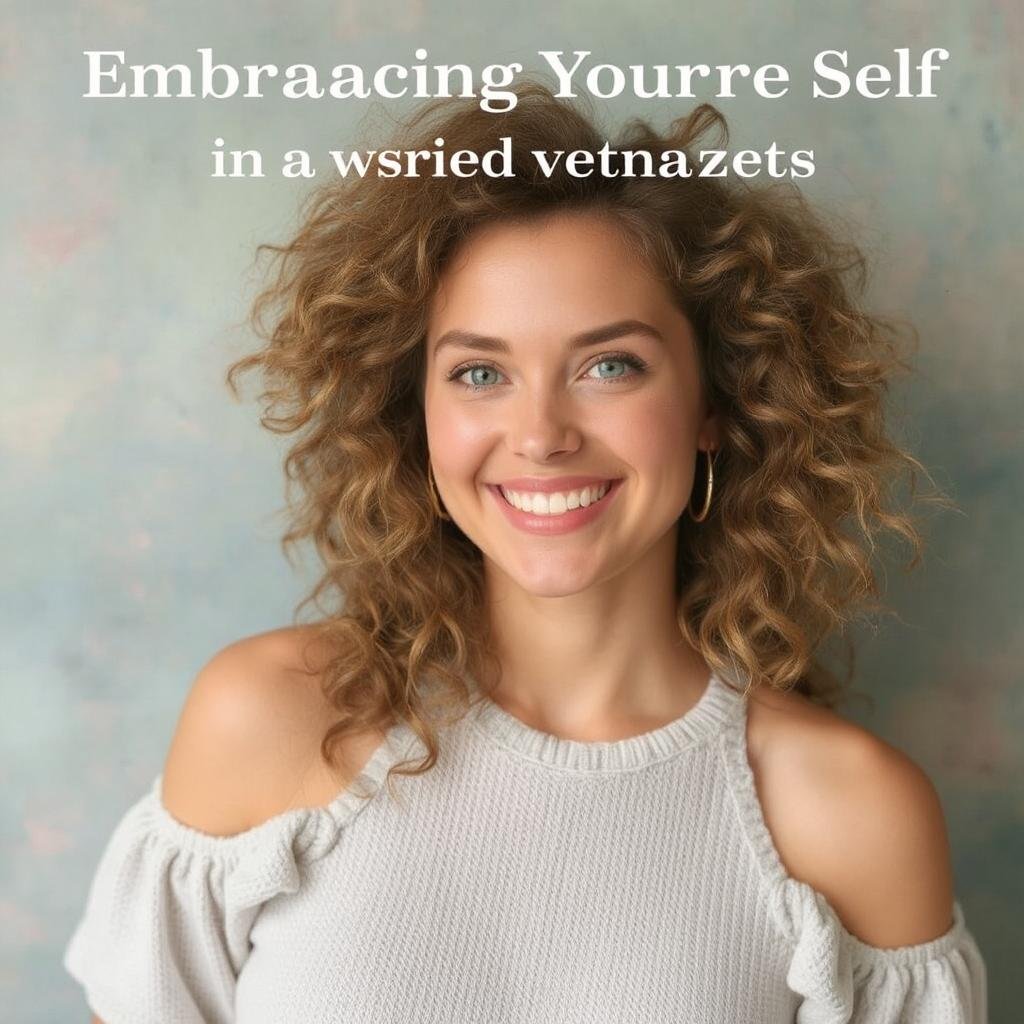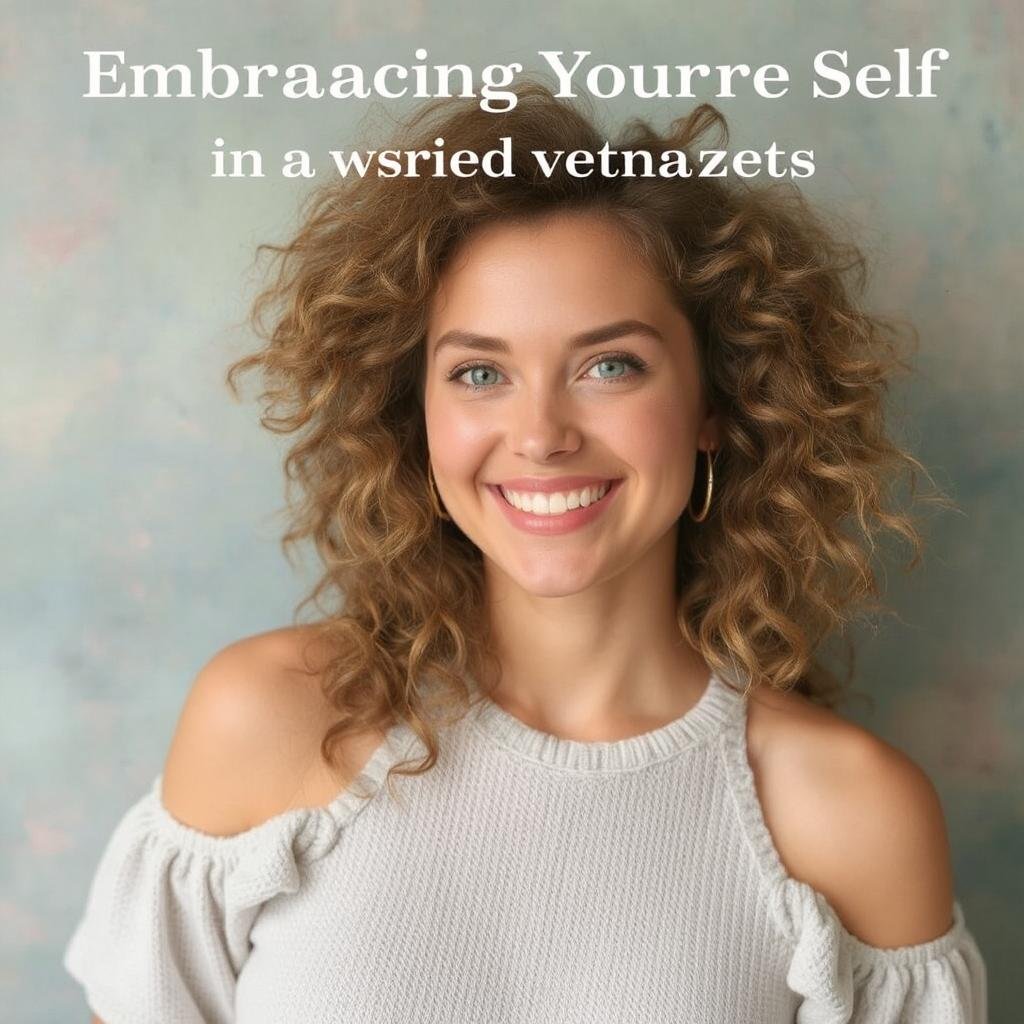In a world dominated by social media, airbrushed advertisements, and narrow beauty standards, the journey toward body positivity and self-acceptance can feel like an uphill battle. Yet, this movement is more than just a trend—it’s a powerful shift in how we perceive ourselves and others. Body positivity encourages us to celebrate all bodies, regardless of size, shape, or appearance, while self-acceptance invites us to embrace our flaws and imperfections as part of what makes us unique. In this article, we’ll explore the origins of the body positivity movement, its impact on society, and practical steps to cultivate self-acceptance in your own life.
The Origins of the Body Positivity Movement
A Historical Perspective
The body positivity movement has roots in the fat acceptance movement of the 1960s and 1970s, which sought to challenge societal discrimination against larger bodies. Activists like Lew Louderback and groups like the National Association to Advance Fat Acceptance (NAAFA) paved the way for a broader conversation about body image and self-worth.
The Rise of Social Media
In the 2010s, social media platforms like Instagram and Tumblr became catalysts for the modern body positivity movement. Influencers and activists began sharing unfiltered photos, personal stories, and messages of self-love, creating a space for marginalized voices to be heard.
Key Figures in the Movement
- Lizzo: The Grammy-winning artist has become a symbol of body positivity, using her platform to celebrate self-love and challenge beauty norms.
- Jameela Jamil: An actress and activist, Jamil founded the “I Weigh” campaign to promote body neutrality and mental health
- Ashley Graham: A model and advocate, Graham has broken barriers in the fashion industry by championing inclusivity and diversity.
The Impact of Body Positivity on Society
1. Challenging Beauty Standards
The body positivity movement has pushed back against unrealistic beauty standards, encouraging people to embrace their natural bodies. This has led to greater representation of diverse body types in media, fashion, and advertising.
Example: Brands like Savage X Fenty and Aerie have embraced inclusive marketing, featuring models of all sizes, shapes, and abilities.
2. Promoting Mental Health
By fostering self-acceptance, the body positivity movement has had a positive impact on mental health. It encourages individuals to reject harmful comparisons and focus on their intrinsic worth.
Example: Studies have shown that exposure to body-positive content can improve self-esteem and reduce body dissatisfaction.
3. Encouraging Inclusivity
The movement has highlighted the importance of inclusivity, advocating for representation of marginalized groups, including people of color, LGBTQ+ individuals, and those with disabilities.
Example: The hashtag #DisabledAndCute has gained traction on social media, celebrating the beauty and resilience of people with disabilities.
4. Redefining Fitness and Health
Body positivity has shifted the conversation around fitness and health, emphasizing well-being over weight loss. It promotes the idea that health looks different for everyone and cannot be determined by appearance alone.
Example: The “Health at Every Size” (HAES) movement advocates for a holistic approach to health that prioritizes mental and emotional well-being.
5. Empowering Individuals
By encouraging people to love and accept their bodies, the movement has empowered individuals to live authentically and unapologetically.
Example: Many people have shared their journeys of self-acceptance on social media, inspiring others to do the same.
The Difference Between Body Positivity and Body Neutrality
While body positivity focuses on celebrating all bodies, body neutrality takes a slightly different approach. It encourages individuals to shift their focus away from appearance altogether and instead appreciate their bodies for what they can do.
Example: Instead of saying, “I love my body,” a body-neutral approach might be, “I am grateful for my legs because they allow me to walk.”
Both perspectives are valuable and can coexist, offering different pathways to self-acceptance.
Practical Steps to Cultivate Body Positivity and Self-Acceptance
1. Practice Self-Compassion
Treat yourself with the same kindness and understanding you would offer a friend. Acknowledge your struggles without judgment and remind yourself that you are worthy of love and respect.
Tip: Use positive affirmations, such as “I am enough just as I am,” to reinforce self-compassion.
2. Surround Yourself with Positive Influences
Follow social media accounts that promote body positivity and self-acceptance. Unfollow or mute accounts that make you feel inadequate or trigger negative thoughts about your body.
Tip: Look for influencers who share unfiltered, authentic content and celebrate diversity.
3. Challenge Negative Thoughts
When you catch yourself engaging in negative self-talk, challenge those thoughts. Ask yourself if they are true, helpful, or kind. Replace them with more balanced and affirming statements.
Tip: Keep a journal to track and reframe negative thoughts.
4. Focus on What Your Body Can Do
Shift your focus from how your body looks to what it can do. Celebrate its strength, resilience, and ability to carry you through life.
Tip: Engage in activities that make you feel strong and capable, such as yoga, dancing, or hiking.
5. Dress for Yourself
Wear clothes that make you feel confident and comfortable, regardless of trends or societal expectations. Your style should reflect your personality, not someone else’s standards.
Tip: Experiment with different styles and colors to discover what makes you feel your best.
6. Practice Gratitude
Take time each day to appreciate your body and all that it does for you. Gratitude can help shift your perspective and foster a deeper sense of self-acceptance.
Tip: Write down three things you’re grateful for about your body each day.
7. Seek Support
If you’re struggling with body image or self-acceptance, don’t hesitate to seek support from friends, family, or a mental health professional. You don’t have to navigate these challenges alone.
Tip: Join online communities or support groups focused on body positivity and self-acceptance.


The Role of Media and Representation
1. The Power of Inclusive Media
Media representation plays a crucial role in shaping our perceptions of beauty and self-worth. When we see diverse bodies celebrated in movies, TV shows, and advertisements, it challenges the idea that there is only one “ideal” body type.
Example: Shows like Shrill and Never Have I Ever feature protagonists who defy traditional beauty standards, offering relatable and empowering narratives.
2. The Impact of Social Media
Social media can be both a blessing and a curse when it comes to body image. While it can perpetuate unrealistic standards, it also provides a platform for body-positive activism and community building.
Example: Hashtags like #BodyPositivity and #SelfLove have created spaces for people to share their stories and support one another.
3. The Responsibility of Brands
Brands have a responsibility to promote inclusivity and diversity in their marketing. By featuring models of all sizes, ages, and abilities, they can help normalize diverse bodies and challenge harmful stereotypes.
Example: Dove’s “Real Beauty” campaign has been praised for its commitment to showcasing real women of all shapes and sizes.
Overcoming Common Challenges
1. Dealing with Criticism
Embracing body positivity and self-acceptance can sometimes attract criticism or negativity from others. It’s important to remember that their opinions do not define your worth.
Tip: Surround yourself with supportive people who uplift and encourage you.
2. Navigating Setbacks
The journey to self-acceptance is not linear. There will be days when you feel less confident or struggle with negative thoughts. Be patient with yourself and remember that progress takes time.
Tip: Reflect on how far you’ve come and celebrate small victories along the way.
3. Balancing Health and Acceptance
Body positivity does not mean ignoring health. It’s about prioritizing well-being in a way that feels good for you, rather than obsessing over weight or appearance.
Tip: Focus on habits that promote physical and mental health, such as eating nourishing foods, staying active, and practicing mindfulness.
The Future of Body Positivity and Self-Acceptance
1. Expanding the Conversation
The body positivity movement must continue to evolve to include even more voices, particularly those from marginalized communities. This includes people of color, LGBTQ+ individuals, and those with disabilities.
Example: Campaigns like #BodyPositivityForAll aim to make the movement more inclusive and intersectional.
2. Embracing Body Neutrality
As the conversation around body image continues to shift, body neutrality may gain more traction as an alternative or complement to body positivity. It offers a way to detach self-worth from appearance entirely.
Example: Influencers like Jameela Jamil advocate for body neutrality as a way to reduce the pressure to love your body at all times.
3. Promoting Systemic Change
True body positivity requires systemic change, from challenging discriminatory practices in the workplace to advocating for inclusive healthcare.
Example: Efforts to ban weight discrimination and promote size-inclusive policies are gaining momentum.
Conclusion
Body positivity and self-acceptance are not just about loving the way you look—they’re about recognizing your inherent worth and embracing your true self. In a world that often tells us we’re not enough, these movements remind us that we are worthy of love, respect, and happiness exactly as we are. By challenging societal norms, celebrating diversity, and practicing self-compassion, we can create a world where everyone feels seen, valued, and empowered. So take a deep breath, look in the mirror, and remind yourself: You are enough, just as you are.



Body positivity is such an important movement in today’s society. It’s refreshing to see a shift away from narrow beauty standards and toward celebrating all body types. The history of this movement shows how much progress has been made, yet there’s still work to be done for true inclusivity. It’s inspiring to see how social media has amplified voices that were previously marginalized. How can we continue to ensure that body positivity remains inclusive and impactful for everyone?
Body positivity is such an important movement in today’s world. It’s inspiring to see how it challenges unrealistic beauty standards and promotes self-love. The inclusion of diverse body types in media and fashion is a step toward real change. However, how can we ensure this movement continues to grow and doesn’t lose its momentum?
This article really resonates with me, especially in today’s world where social media often sets unrealistic standards. It’s refreshing to see how the body positivity movement has evolved from the 1960s to now, challenging societal norms and promoting inclusivity. I appreciate how it emphasizes self-acceptance and mental well-being over conforming to narrow beauty ideals. The role of social media in amplifying diverse voices is particularly inspiring, as it creates a platform for marginalized groups to share their stories. However, I wonder if the movement has faced any significant backlash or challenges in recent years? It’s also interesting to think about how this shift impacts industries like fashion and advertising—do you think they’ve genuinely embraced diversity, or is it just a trend? Overall, this piece is a powerful reminder to celebrate our uniqueness and reject harmful comparisons. What steps do you think we can take to further promote body positivity in our daily lives?
This article really resonates with me—it’s refreshing to see such a thoughtful exploration of body positivity and self-acceptance. I love how it highlights the movement’s roots in the 1960s and 1970s, showing that this isn’t just a fleeting trend but a long-standing fight for equality. The role of social media in amplifying diverse voices is fascinating, and it’s inspiring to see how platforms like Instagram have become tools for change. I do wonder, though, how we can ensure that the movement remains inclusive and doesn’t get co-opted by mainstream beauty standards. What do you think about the balance between celebrating all bodies and addressing the systemic issues that perpetuate body shaming? Also, how can we encourage more men to engage in this conversation? I’d love to hear your thoughts!
This is such an inspiring read! I love how the body positivity movement has evolved from its roots in the 1960s to become a global force for change today. It’s refreshing to see how social media has been used as a tool for empowerment rather than just comparison. The focus on inclusivity and representation truly makes it feel like a movement for everyone, not just a select few. I also appreciate the emphasis on mental health and the idea that self-acceptance is a journey, not a destination. One thing I’m curious about is how we can continue to push back against the lingering societal pressures that still dominate so much of our media. Do you think the movement could ever become mainstream enough to completely dismantle these outdated beauty standards? I’d love to hear your thoughts!
Great breakdown! For those diving deeper into MCP integration, the MCP Developer Tools offer essential resources to streamline AI connectivity and data handling.
As a content creator, AI tools like AI Kungfu Video Generator are game-changers. Turning a still image into a dynamic video saves time and adds that extra punch to your storytelling-definitely worth exploring!
I really appreciate how this article dives deep into the roots of the body positivity movement and its evolution over time. It’s inspiring to see how social media has amplified voices that challenge unrealistic beauty standards. The emphasis on inclusivity and representation is crucial, especially for marginalized communities. I wonder, though, how we can ensure this movement doesn’t get co-opted by brands for profit? It’s great to see diverse body types in media, but sometimes it feels performative. How can we keep the focus on genuine self-acceptance rather than just aesthetics? What are your thoughts on balancing self-love with the pressures of societal expectations?
This article really resonates with me, especially in today’s world where social media often sets unrealistic standards. It’s refreshing to see how the body positivity movement has evolved from its roots in the 1960s to become such a powerful force today. I love how it emphasizes celebrating all bodies and embracing imperfections—it’s such a needed shift in perspective. The role of social media in amplifying these voices is fascinating; it’s amazing how platforms like Instagram have created spaces for marginalized groups to share their stories. I wonder, though, how we can ensure this movement continues to grow and doesn’t lose its authenticity? What do you think about the balance between body positivity and health—can they coexist without conflicting? I’d love to hear your thoughts on how we can keep this conversation alive and meaningful!
Great breakdown of Subway Surfers! It’s amazing how far it’s come since 2012. If you’re looking to dive in, check out the latest updates and guides at Subway Surfers Games. Still a top pick for endless runner fans!
It’s inspiring to see how the body positivity movement has grown from its roots in the 1960s to becoming a global conversation. I think it’s amazing how social media has played such a huge role in amplifying these voices and creating spaces for inclusivity. At the same time, I wonder if the movement is truly accessible to everyone—what about those who don’t have access to social media or whose voices are still overlooked? I love how it challenges unrealistic beauty standards, but do you think brands are genuinely committed to change, or is it just a marketing strategy? Personally, I believe self-acceptance is a journey, and this movement is a powerful reminder that we’re more than our appearances. What’s one thing you’ve learned or gained from the body positivity movement? I’d love to hear your thoughts!
Dice games always feel more strategic when you understand the odds, and it’s cool how platforms like Jilislot use AI to help players improve their chances. A great blend of fun and smarts!